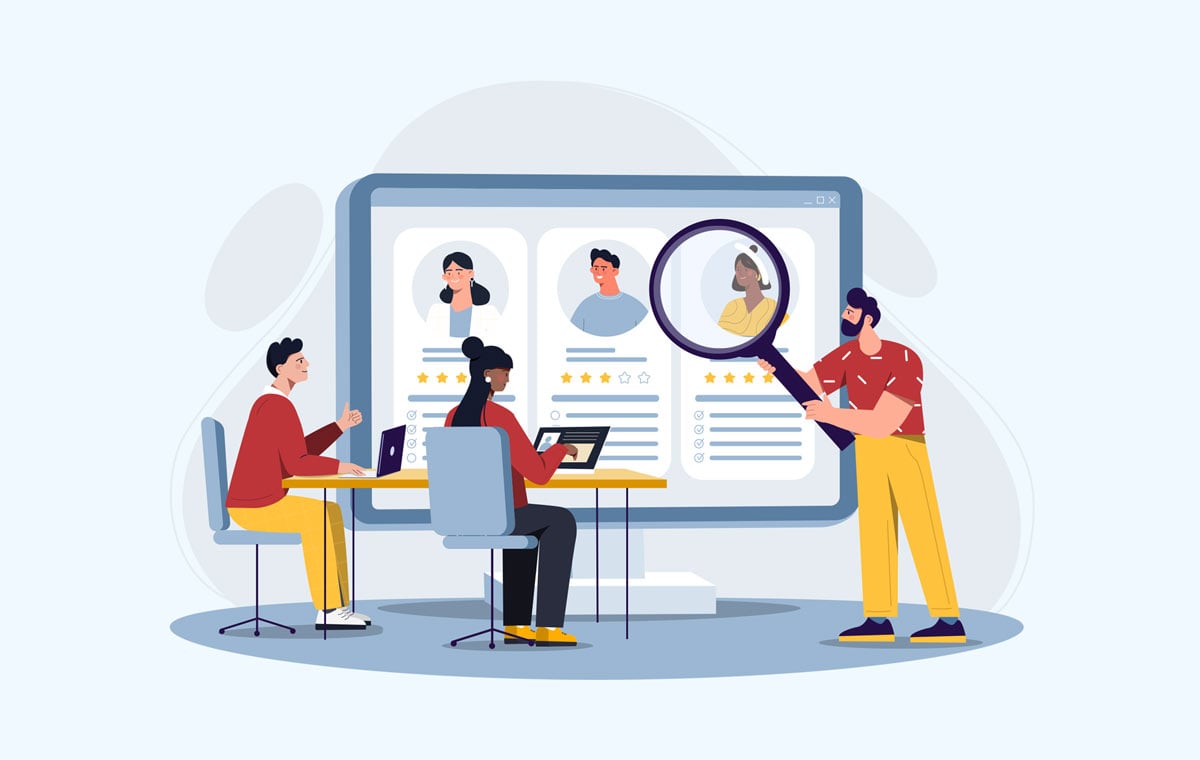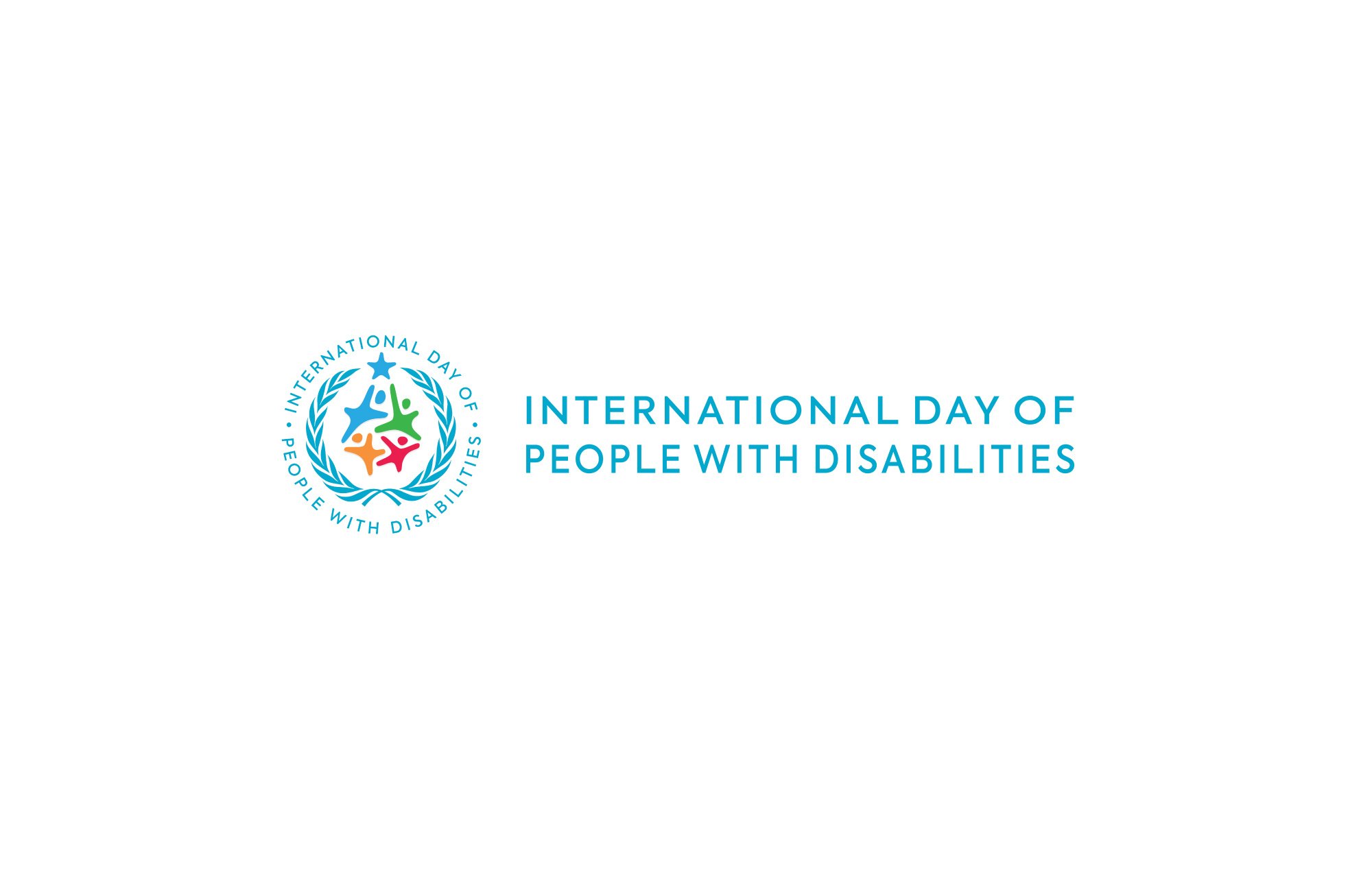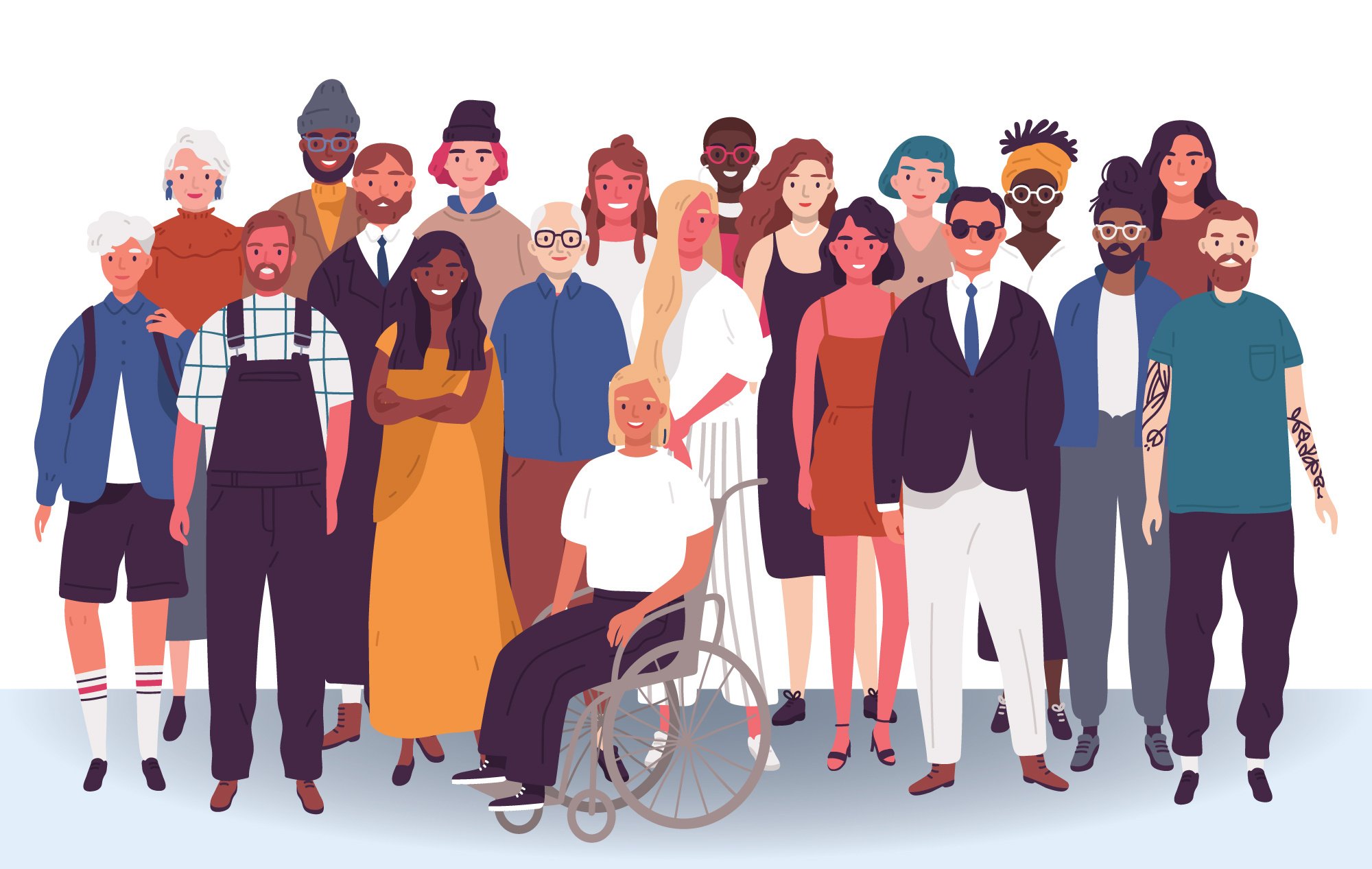Key Takeaways:
- Building a diverse workplace is considered a winning strategy for organizations across industries, providing clear financial and reputational benefits.
- Elevate your hiring by actively integrating DEI principles and crafting a workplace culture that fully embraces diversity, equity, and inclusion—helping you attract the very best talent.
- Overcome barriers to inclusion by opening up recruitment, challenging biases, and building an environment where diversity thrives.
In today's business environment, emphasizing diversity, equity, and inclusion (DEI) is paramount for companies aiming to reflect the broader community's diversity. Implementing inclusive hiring practices is not just about enhancing workforce diversity, but also creating a workplace where every employee feels valued and empowered.
The journey toward an inclusive workplace starts with redefining hiring practices. From drafting job descriptions to selecting sourcing channels, every element must align to foster diversity and inclusion. Beyond attracting diverse talent, it's about building an environment where this talent can grow and thrive.
Embracing diversity and implementing necessary changes, though challenging, has emerged as a winning strategy for organizations across industries.
“There have been far-reaching changes in the business environment over the past few years, yet, companies with diverse leadership teams continue to be associated with higher financial returns,” global consulting firm McKinsey & Company said in its 2023 report on the business impact of diversity.
To build a more inclusive workplace, consider these essential steps:
- Nurture Employee Growth and Skills
- Create Compelling & Clear Job Listings
- Tap into a Broad Range of Talent Pools
- Practice Fair and Open Interview Methods
- Stand Firm on Your EEO Promises with Real Actions
Additionally, we'll look at the importance of prioritizing accessibility, encouraging internal mobility, and actively measuring and seeking feedback on DEI efforts.
Implementing Inclusive Hiring Practices
Invest in Talent Development
It's crucial to structure your selection process to champion DEI at every turn. Think of it as paving the way for folks from underrepresented groups to dive into training, mentorship, and career advancement opportunities directly within your organization.
By putting a spotlight on skill-building and professional growth for everyone, no matter their background, you're setting the stage for a richer company culture—one that truly mirrors a wide array of perspectives and experiences.
Make Your Organization a Desirable Destination
If you're leading a forward-thinking organization, you know how important it is to stand out as a top choice for potential team members.
Crafting top-notch attraction strategies is key in your DEI hiring playbook. It's all about getting proactive—reaching out to communities, syncing up with organizations, and shining a light on your job openings, especially to those from underrepresented backgrounds.
Consider attending career fairs, teaming up with DEI-minded recruitment agencies, and using the power of social media to get your job postings in front of as many eyes as possible. It's about being where the talent is and inviting them into your world.
Clarify Job Design & Role Responsibilities
Be sure to carefully examine job descriptions and eliminate any biased language or requirements that may deter qualified candidates from applying. Additionally, offering flexible work arrangements and accommodating employee needs can help create a better work environment.
Explore a Wide Spectrum of Recruitment Avenues
Organizations should actively source candidates from a range of different channels. This may include partnering with community organizations, professional associations, and educational institutions that serve underrepresented groups.
Implement Inclusive Interview Practices
It's important to equip your hiring managers and interviewers with the right training for conducting interviews that emphasize fairness and focus on the candidate's job-related competencies and qualifications.
Additionally, embracing the use of diverse interview panels is a smart move. It not only helps in reducing unconscious biases but also ensures a more comprehensive evaluation of candidates. This approach offers a balanced perspective in the selection process, making it more effective and inclusive.
Follow Through on Your Equal Employment Opportunity (EEO) Statement
Creating a meaningful EEO statement is a crucial step, yet the real impact comes from putting those principles into action to nurture a genuinely inclusive culture. These practices must mirror your organization’s EEO commitments. This means equal opportunity for everyone, no matter their race, color, religion, gender, or any other identifier. It's about making inclusivity not just a policy, but a daily practice.
Make Workplace Accessibility a Top Priority
Incorporating accessibility into the hiring process is a fundamental element, especially concerning individuals with visible and invisible disabilities. This means maintaining an accessible website and application platform, providing accommodations during interviews, and employing inclusive language throughout all communication channels.
It’s important to note that greater accessibility shouldn’t be limited to talent acquisition—providing employees with the tools they need to be effective and succeed, such as assistive technology, is critical to creating an inclusive work environment.
Make It Easier for People to Advance in Their Careers
Boosting career advancement means setting up clear and fair paths for promotions and growth in your organization. It's all about making sure everyone has the same shot at moving up, which helps support a culture where people feel truly appreciated and eager to advance. Clear, effective communication is key here—everyone knows about new opportunities and feels empowered to go after them without hitting any roadblocks.
Solicit Feedback From (& Listen to) Job Candidates
Gathering feedback at crucial points in the candidate journey sheds light on your recruitment process's effectiveness. By swiftly tackling any concerns highlighted in candidate feedback, you can significantly improve the recruitment experience, making your company a magnet for top talent.
Moreover, delving into candidate behavior offers insights into what potential employees are looking for, allowing you to refine your recruitment approach to align more closely with their desires and expectations.
Related Reading: A Look at Race, Bias, Microaggressions & Representation In Today’s Workplace
Benefits of Implementing Inclusive Hiring Practices
It goes without saying that any organization operating in the United States is legally required to consider every candidate equally. It's also important to note that inclusive hiring carries profound implications for an organization's reputation and has even been shown to boost productivity and improve overall performance.
According to a 2023 report by McKinsey & Company, the global management consulting firm, businesses boasting greater diversity within their boards of directors tend to achieve superior financial performance.
The report indicates that companies ranking in the top quartile for both gender and ethnic diversity among their executive teams are, on average, 9 percent more likely to outperform their industry peers financially, while those falling into the bottom quartile are 66 percent less likely, on average, to outdo their counterparts.
Among the possible explanations: Organizations that prioritize DEI hiring practices tend to be more innovative, adaptable, and resilient in the face of challenges.
They also tend to have higher employee retention rates and foster a more positive brand image. According to a report by Clutch.co, the B2B research, ratings and reviews site, 24 percent of people would like to see their company host DEI training and discussions, while 23 percent of people report that a diverse workplace improves employee engagement and satisfaction, which can increase companies’ productivity and reduce turnover.
Employees who feel valued, respected, and included are more likely to stay with the company long term. Moreover, a reputation for inclusivity enhances brand perception among consumers, investors, and other stakeholders, leading to increased loyalty and trust in the organization.
Related Reading: Mistakes Companies Make When They Think They’re Being Inclusive & Accessible
A Brief History of Inclusive Hiring Laws
Inclusive hiring laws and regulations in the United States have evolved significantly over the past century, reflecting changing societal attitudes toward equality and diversity in the workforce.
- The foundation of inclusive hiring laws in the United States can be traced back to the Civil Rights Act of 1964, which prohibited discrimination based on race, color, religion, sex, or national origin in employment practices.
- Title VII of the Civil Rights Act specifically addressed employment, making it illegal for employers to show bias in hiring, firing, compensation, or other terms and conditions of employment based on protected characteristics.
- The Age Discrimination in Employment Act (ADEA) of 1967 prohibits ageism against individuals aged 40 and older, while the Americans with Disabilities Act (ADA) of 1990 prohibited prejudice against individuals with disabilities in all areas of public life, including employment.
- In 1991, amendments to Title VII of the Civil Rights Act strengthened enforcement mechanisms and provided additional remedies for victims of occupational bias. These allowed for compensatory and punitive damages in cases of intentional discrimination and reaffirmed the prohibition of prejudicial practices in all aspects of employment.
- In 1997, Executive Order 11246 required federal contractors and subcontractors to take affirmative action to ensure equal employment opportunities without regard to race, color, religion, sex, sexual orientation, gender identity, or national origin. This expanded protections to federal contractors and played a significant role in promoting diversity in the federal workforce and among government contractors.
In recent years, there has been a growing emphasis on DEI initiatives in the workplace, leading to increased awareness and advocacy for inclusive hiring practices. State and local governments have also passed legislation aimed at eliminating barriers to employment for marginalized groups. Despite this, according to 2020 data from the U.S. Equal Employment Opportunity Commission (EEOC), there were more than 65,000 charges of workplace discrimination, costing employers $439.2 million in lawsuits and settlements.
Overcoming Barriers to Inclusion
Despite the progress made over the decades, organizational inequality and disparities in employment opportunities continue to pose a significant challenge to achieving equality in the workforce.
Address Internal Biases
Personal biases encompass the subtle, often unacknowledged attitudes and stereotypes we harbor about specific individuals or groups. These can sometimes be harmful, such as unfairly prioritizing male candidates or unfairly presuming that individuals of a certain race or background won't fit into your team dynamic.
This can also manifest as a fear of the unknown, leading employers to gravitate towards individuals who share similar backgrounds, beliefs, and communication styles, over those with different cultural or ethnic backgrounds.
By providing educational resources and training to enlighten employees about the impact of unconscious biases, you can empower them to identify and challenge their preconceptions.
You can also host networking events and team-building exercises specifically designed to encourage interaction and foster understanding among coworkers, to help foster a workplace culture that embraces variety and ensures that all employees feel valued and supported, regardless of their differences.
Don’t Rely Solely on Referrals or Algorithms to Source Candidates
Employee referral programs can unintentionally lead to a lack of diversity.
According to the IT and engineering employment agency Apollo Technical, referrals account for 30 to 50 percent of all new employees in the United States. These candidates are as much as four times more likely to land a job through their referrals than those chosen for interviews through company recruitment websites.
People tend to recommend candidates who are like them, which can keep a company's makeup the same without realizing it. Although this might not be an issue in diverse workplaces, it can worsen diversity problems where variety is lacking.
Using software and algorithms for screening applicants is seen as a way to cut out bias. Yet, these tools might unintentionally prefer candidates similar to those who've succeeded in the past.
Implement strategies to improve your recruitment channels and mitigate disparate treatment in your selection processes. One approach is to supplement referral programs with proactive outreach efforts targeting new talent pools, such as partnering with professional organizations and attending industry-specific networking events. Critically evaluate the algorithms and criteria used in applicant screening software, and conduct regular audits and updates to these algorithms while incorporating new perspectives in their development.
Think Beyond ‘Meeting the Requirements’
Many organizations fall into the trap of assuming that hiring candidates of different backgrounds is synonymous with achieving sustainable DEI goals. However, this perspective overlooks the deeper, ongoing commitment necessary for true equality.
Diversifying is a key first step, but it's just the start. True change happens when companies focus on creating a space where people from all backgrounds not only work but also truly feel valued, included, and empowered. This is not a simple one-time policy change, but a long-term initiative that demands thoughtful and deliberate effort.
Being aware of these issues is necessary across all levels of an organization, and should involve utilizing culturally and ethnically diverse teams in the hiring process to consider various perspectives from the outset of candidate screening.
Discover the power of inclusion with InclusionHub, your premier online resource directory committed to advancing gender equality, accessibility, DEI, and other critical social causes. Join us in our mission for a more inclusive world. Contact us today to learn more or get involved!






Leave a Comment